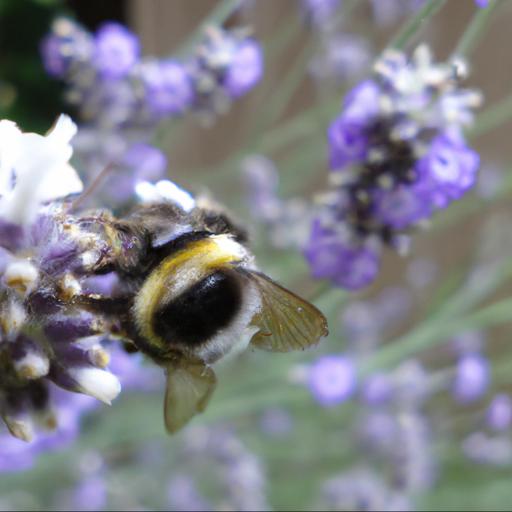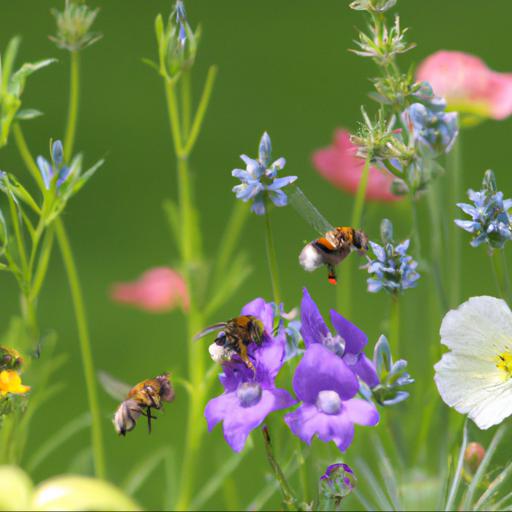Summer is the perfect time to make your garden bee-friendly. Bees are essential to our environment and play an important role in pollination.
With a few simple changes, you can make your garden a haven for bees and other pollinators. From planting bee-friendly flowers and shrubs to providing a water source, there are many ways to create a bee-friendly garden. With these tips, you can help ensure that bees have a safe and healthy place to thrive in your garden this summer.
Need to know about bees

Making Your Garden Bee-Friendly This SummerAre you eager to add a little zing to your garden this summer season? Do you want to go beyond adding beautiful summer blooming flowers and other eye-catching plants?
If so, you may want to consider making your garden bee-friendly. Bees are a crucial part of our natural environment, and part of keeping them and the rest of nature alive is helping them in our own backyard. Summer is already here, and as the temperature rises, gardens become an ideal environment for bees.
The key to attracting bees to your garden is having the right mix of plants that attract bees. Include single-flower varieties, such as daisy, lavender, and asters, as they give more pollen that bees can take away. Thyme, oregano and oregano are great for attracting bees because they are low-maintenance and give off a strong scent that bees simply love.
Different types of clover are other wonderful option when it comes to bee-friendly plants. If you’re looking for something a bit more exotic, try adding bee balm or butterfly bush to your garden as well.
It’s also important to note, however, that many drugs, sprays and other substances used in our daily lives can harm bees. Make sure to steer clear of chemically-treated lawns and garden areas, and beware of using any type of pesticide or insecticide. Additionally, be sure to provide plenty of clean water for bees, as they get dehydrated quickly with the rising summer temperatures.
Keep in mind that the more steps you take towards making your garden bee-friendly, the more you can help support our natural environment and enjoy the wonderful buzzing of happy bees in your garden!
Tips for making your garden bee-friendly

As a UK garden expert, I highly recommend making your garden bee-friendly in the summer. Bees are some of the most important species in the natural environment, responsible for the pollination of flowers and crops alike. In the summer, landscapes across the UK can become a busy buzzing abode for these valuable little critters.
To encourage them to visit your own garden, there are a few simple steps you can take. Firstly, try to provide a range of habitats and flower types in your garden to make it as inviting as possible for bees.
There are many wildflowers that attract bees, including the likes of lavender, poppies and daisies; try to create a vibrant and colourful display by mixing up different types. On top of that, add bee hotels or bee nesting boxes to provide a sheltered habitat. Secondly, avoid using pesticides in your garden and garden furniture.
These chemicals are harmful to bees as well as disrupting their life cycle and reproduction; an alternative is to use natural remedies such as soapy water or garlic spray instead. There are also a range of bee-friendly gardening techniques such as companion planting or crop rotation that allow for healthier controlled growth that won’t be dependent on such harmful chemicals.
Finally, Make sure to provide a water source for the bees with a shallow dish or bird bath filled with some stones. That way, the bees will always have somewhere to cool off and perhaps even feed, as well as select areas of the garden which provide shelter from the summer heat. Making your garden bee-friendly will be of great benefit to both you and the environment.
Bees are essential for our food production and overall successes of horticulture. On top of that, they help develop beautiful garden displays and buzzing humming atmospheres; so why not invest today in creating a bee-friendly summer garden of your own?
Plants to include in your garden to attract bees

Gardening with bees in mind – Make your garden bee-friendly in summerWhen it comes to creating the perfect summer garden, having a few favourite plants is key to attracting busy bees. Bees are a vital part of the cycle of life, pollinating plants and helping them to grow. From providing a natural source of food and drink through pollination, to protecting the environment, bees play an important role in many garden ecosystems.
With this in mind, it’s important to make sure that your garden is bee-friendly. In this article, we’ll explore how to make your garden bee-friendly in the summertime.
The first step to creating a bee-friendly garden is to select plants that attract the most bees. Some of the most popular bee-friendly plants include lavender, foxglove, cosmos, phlox, coneflowers and nasturtiums. These plants provide a natural source of food and drink which is essential for the growth and health of bee colonies.
Furthermore, many of these bee-friendly plants have vibrant colour, making them a great addition to any garden. In addition to this, it is important to consider the wider ecosystem of your garden and the effect that this will have on bees.
Even the most dedicated bee-friendly garden can suffer if it is in a too shady or too humid environment. It is important to ensure that the plants you choose are suitable for your local climate and will not be affected by weather conditions.
Additionally, planting bee-friendly flowers that bloom through the summer months will ensure that bee colonies stay healthy. By making your garden bee-friendly, you can be sure that it will be a safe and healthy environment for our buzzing friends. Planting bee-friendly flowers and taking into consideration the wider environment will ensure that your garden is a great source of food and drink for the bees.
While it is important to dedicate extra attention to this in the summer months, making your garden bee-friendly all year round is sure to pay dividends in the future.
How to monitor and protect your bee population
As a garden expert, it is important to ensure that your bee population is not only monitored but also protected in order to keep your garden thriving in the summer. Bees are artisan pollinators without whom many plants would not be able to reproduce.
To make your garden bee-friendly in summer, there are several key steps you should take. First of all, you should start by providing a wide variety of flowers for your bees to visit. This could be either annual or perennial plants, or a combination of both.
Planting a variety of nectar- and pollen-rich blooms (particularly native species) will attract native bees, honey bees, bumblebees, and more. Examples of lovely flowering plants which bees love include lavender, daisies, cosmos, clover, poppies and sage. By offering a range of bloom times and colors, you can ensure that the bees have plenty of food to visit throughout the summer months.
Secondly, it’s important to provide a fresh water source nearby. Bees need water to cool their hives and also for their own drinking.
Place shallow dishes of water around the garden, with pebbles for the bees to perch on. Be sure to change the water every other day to prevent a build-up of pollutants.
Finally, it’s a good idea to install bee nesting habitats in your garden. This could be a bee box, bee house, or bee skep, but make sure you position it near cover and away from prevailing winds. The nesting materials should be left to dry in the sun in order to reduce the risk of damp and mould, which can be harmful to bees.
By taking note of these tips and creating a bee-friendly garden in summer, not only will you be helping your local bee population, but it also promises to be an enjoyable and rewarding project for you.
Our video recommendation
Final Touch
Making your garden bee-friendly in summer is a great way to help the environment and encourage pollination. Planting bee-friendly flowers and herbs, providing a shallow water source, and avoiding pesticides can all help create a bee-friendly garden. Planting a variety of flowers and herbs that bloom at different times can help provide a continuous source of food for bees.
Providing a shallow water source such as a birdbath or a shallow dish filled with stones and water can help bees stay hydrated. To keep your garden safe for bees, avoid using any kind of pesticide or herbicide.
With these simple steps, you can make your garden a safe and inviting place for bees this summer.
FAQ
What plants are best for attracting bees in the summer?
Some of the best plants for attracting bees in the summer are lavender, sunflowers, cosmos, bee balm, and clover.
How can I create a bee-friendly environment in my garden?
To create a bee-friendly environment in your garden, you should plant a variety of flowers that bloom throughout the growing season, provide a source of water, and avoid using pesticides and other chemicals. Additionally, you can create a bee house or provide nesting materials to attract native bees.
What are the benefits of having bees in my garden?
The benefits of having bees in your garden include pollination of plants, increased biodiversity, and natural pest control. Bees also produce honey and wax, which can be used for various purposes. Additionally, having bees in your garden can provide a calming and peaceful atmosphere.
What are some tips for keeping bees safe in my garden?
Some tips for keeping bees safe in your garden include: planting bee-friendly flowers, avoiding the use of pesticides, providing a water source, and creating a sheltered area for the bees to rest.
How can I make sure my garden is providing enough food for bees?
To make sure your garden is providing enough food for bees, you should plant a variety of flowers that bloom at different times throughout the growing season. Additionally, you should avoid using pesticides and other chemicals that could harm bees.
What are some of the best ways to protect bees from pesticides in my garden?
Some of the best ways to protect bees from pesticides in a garden include avoiding the use of pesticides altogether, planting bee-friendly flowers, creating a bee bath, and providing a bee house.

